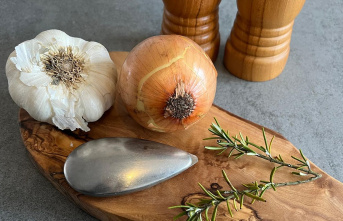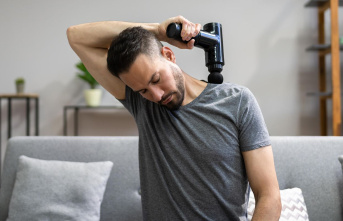It doesn't take a lot of LSD to drastically change your psychological experience. This is how Volker Auwachter describes it. Compared to many other substances, this involves the smallest amounts: "From 50 or 100 micrograms onwards, we speak of a psychedelic dose," explains the head of the laboratory for forensic toxicology at the University Hospital of Freiburg. It is not without reason that the responsible European observatory describes the banned hallucinogen as one of the “most potent drugs known to man”.
But what happens if you reduce the dose of the psychedelic significantly - to around ten micrograms? A fact check on this so-called microdosing.
Claim: LSD in small quantities is harmless.
Assessment: Possible side effects are not yet foreseeable.
Facts: Those who practice microdosing usually only use a tenth or twentieth of a typical dose for a trip, i.e. around ten micrograms of LSD, says Felix Müller, deputy senior physician at the University Psychiatric Clinics in Basel. But unlike the consumption of psychedelics in high doses, with microdosing it is also common to take a small dose again after a few days. Müller has been working on LSD research for about ten years.
Overview studies on microdosing also assume a regular intake of small amounts of psychedelic substances approximately every three days over a longer period of time.
What does this mean for possible risks?
The following generally applies to LSD: The European Monitoring Center for Drugs and Drug Addiction (EMCDDA) does not see any risk of becoming dependent. According to Auwachter, there is no need to fear poisoning in the sense of toxic damage to organs, even at higher doses. The risks are more in the psychological area, not physical health, says Müller.
However, it is not clear whether this is also the case with LSD microdosing: "It's a phenomenon that hasn't been around for very long," explains the doctor. "And it is quite conceivable that things will look different with such repetitive use." Pharmacologists once suspected that changes to the heart valves might occur. This happened a few years ago after taking medications available at the time that worked on the same receptor.
The head of the Department of Clinical Pharmacology at the University Hospital of Basel, Matthias Liechti, also emphasizes: Side effects on heart valve function should be examined as risks in studies when taken regularly and over a long period of time over a period of months. A current review paper by a research team led by Robin Murphy from the University of Auckland regarding the safety of LSD microdosing in the journal "Biological Psychiatry" comes to the conclusion that previous studies have not found any serious side effects.
But Müller points out that the time frame of these studies is manageable and that they are only isolated investigations. The doctor is surprised that people seem to be “relatively naïve” about microdosing. Ultimately, it is a bit like taking a drug that is not on the market but is still being studied - and for which you cannot really estimate the side effects.
What other risks are there?
Added to this is the uncertainty as to which dose you actually consume. “Whether with microdosing or the “classic” form of consumption, in both cases it is never really known how much active ingredient is contained,” explains Müller. The only way to clarify this is drug checking at addiction prevention centers, which can test the substances for the amount of active ingredients.
"LSD is usually sold dripped onto plotter paper - like blotter paper - that is cut into small rectangles," explains the expert. A rectangle typically contains 100 or 200 micrograms. During microdosing, these papers would then be cut into smaller pieces. This form of dosing is "of course not exact" - just like another form of sale: LSD dissolved in water or alcohol, which contains, for example, 100 micrograms per drop and is further diluted for microdosing.
On a physical level, Müller doesn't think this is dangerous - it takes "extremely high doses" for LSD to become problematic. The psychological effects are more difficult, as they are stronger and last longer with a higher dose of LSD. “With microdosing, it is of course possible to be significantly “off the mark” under certain circumstances,” says Müller.
Claim: LSD microdosing makes you more focused and creative.
Assessment: Not proven by studies.
Facts: Taking small doses of LSD makes you more concentrated, more creative and helps against depression and anxiety disorders? There is currently a lack of evidence for this. “There is hardly any data on the effects of LSD microdosing, as controlled studies are still largely lacking,” says Liechti. Immediate effects are similar to high doses, but smaller. There is therefore evidence that the well-being of people who take small doses of LSD improves compared to people who receive a placebo. “But only on the day of treatment, not afterwards,” emphasizes Liechti.
According to the expert, it is not yet possible to say to what extent microdosing helps against depression and anxiety due to a lack of study results. LSD in low doses has no effect on creativity, according to the overview study by Murphy's group. Claims by consumers that their mood and cognitive abilities are improving are therefore only supported to a limited extent by previous studies. No lasting effects on mood and cognitive abilities were found after repeated ingestion of small amounts of LSD in any of the studies considered.
All information about the dpa fact checks Contact page for the dpa fact check team












